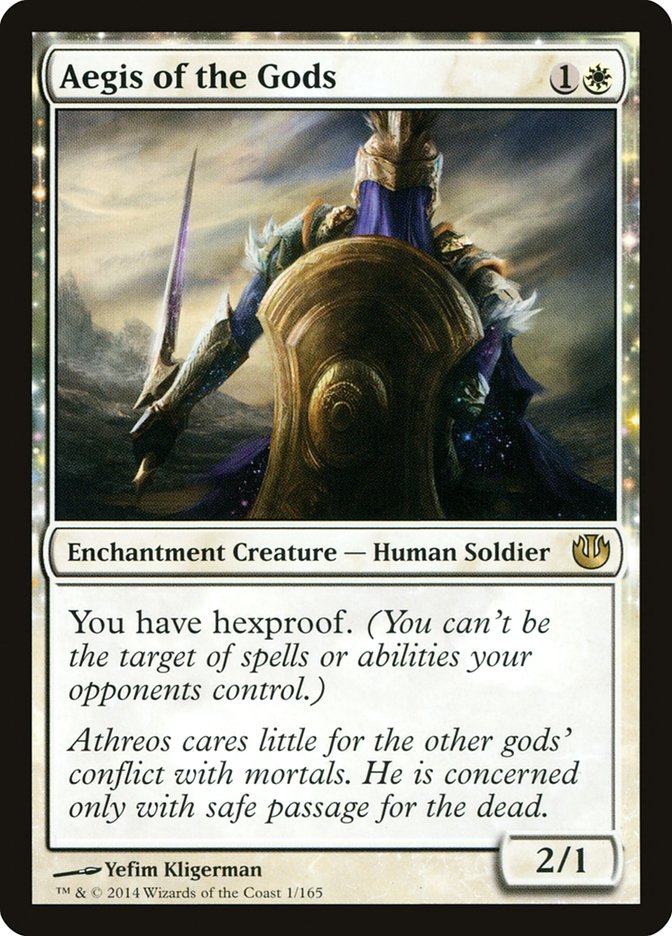Magic: The Gathering is a game where words hold immense importance. The language used on a card and how it’s employed are central to its mechanics. To streamline comprehension, cards often feature what we call “keyword abilities.” If every aspect of a card like Soulflayer were explicitly explained, its reminder text would span pages.
The breadth of keywords in Magic is vast, perhaps numbering in the hundreds, though many players might guess it to be around fifty or sixty. Among these, hexproof stands out as one of the most recognizable, albeit occasionally notorious, especially when facing it on the battlefield.
But why does this ability enjoy such widespread recognition—and at times, disdain? Let’s delve into that.
How Does Hexproof Work?
In essence, hexproof states that no spell or ability under the control of an opponent may target a card.
Magic is rife with spells and abilities that require “targeting.” Depending on the ability, these targets can range from creatures and planeswalkers to players, enchantments, spells on the stack, or artifacts. Practically anything within the game can serve as a target—except when it has hexproof.
Both permanents and players can possess hexproof, rendering them immune to targeting by opponents. For instance, if you control an Aven Fleetwing and your opponent casts Shock, they cannot direct the spell at your creature.

A Brief History of Hexproof
Hexproof made its initial appearance before being designated as a keyword. The first instances of this ability can be traced back to Portal Three Kingdoms in 1999—predating its formal keyword status by twelve years.
The first cards to exhibit this ability were Taoist Hermit and Zuo Ci, the Mocking Sage. While a few cards sporadically featured hexproof thereafter, it wasn’t until the release of Duels of the Planeswalkers 2012 in 2011 that hexproof was granted its keyword status. This mechanic debuted in physical sets through Magic 2012 and Commander 2011, both released in the same year as the Duels game.
Since its formal designation, hexproof has become an evergreen ability, appearing in numerous cards across almost every set. As an evergreen trait, hexproof is expected to persist across future sets, maintaining its presence in the game.

Is Hexproof Gone from Magic? Why?
Yes and no. While hexproof remains an integral aspect of the game, its functional application has undergone slight alterations.
Hexproof is now employed not as a keyword inherent to the card itself, but rather as a quality conferred to you or other creatures under your control. Recent cards featuring hexproof, such as Guardian Augmenter and Keen-Eared Sentry, grant the ability to other creatures you control or to yourself, rather than possessing it intrinsically.
This transformation is linked directly to the introduction of the “ward” mechanic. Wizards of the Coast (WotC) recognized that hexproof, in its traditional form, could be excessively potent and occasionally detracted from gameplay enjoyment. A creature with hexproof is notoriously challenging to deal with, especially when combined with other forms of evasion.
To address this, WotC introduced the “ward” mechanic, offering a more balanced alternative. Ward provides significant protection to individual creatures by countering opponent’s spells unless they pay an additional cost.
While hexproof remains present in Magic, its prevalence has diminished, sharing the spotlight with the emerging ward mechanic.
What Is “Hexproof From”?
In an effort to temper the potency of hexproof while preserving its functionality, certain cards have been endowed with “hexproof from” specific colors or card types. This variant of hexproof prevents targeting by the specified color or type—similar to protection, albeit without immunity to combat damage.
For instance, a card like Eradicator Valkyrie is impervious to planeswalker abilities that would target it. However, it remains susceptible to abilities from other permanents and to spells.

What Does Hexproof Protect Against?
Hexproof safeguards against spells or abilities that target. This immunity extends to a broad spectrum of effects, excluding those specifically designated to bypass hexproof.
Does Hexproof Protect from Board Wipes?
No, hexproof does not shield against board wipes. Such effects, including Day of Judgment, typically lack target designations, affecting all relevant permanents indiscriminately.
What Does Hexproof Not Protect Against?
Hexproof is ineffective against effects that do not target the creature or player. Sweepers, sacrifice effects, and spells or abilities interacting with cards in the graveyard or library bypass hexproof’s defenses.
What Happens if a Creature Gains Hexproof After Being Targeted?
When a creature is the target of a spell and subsequently gains hexproof, the hexproof effect takes precedence and overrides the initial targeting. Consequently, the opponent’s spell fails to impact the creature.
Can You Counter a Hexproof Creature?
Yes, hexproof creatures can be countered. While they possess immunity to targeting as permanent cards, they remain susceptible to countermagic while still on the stack as creature spells.
Can You Be Attacked if You Have Hexproof?
Yes, hexproof does not hinder attacks. Unlike spells or abilities, attacking does not involve targeting, rendering hexproof inconsequential in combat situations.
Does Hexproof Stop Deathtouch?
No, hexproof does not impede deathtouch. By evading targeting restrictions, this ability makes sure that damage from creatures with deathtouch remains lethal regardless of the target’s hexproof status.
Hexproof vs. Shroud vs. Protection vs. Ward
Each of these abilities offers varying degrees of protection to creatures, albeit with nuanced distinctions.
- Shroud: Prevents targeting of the creature by any player, including its controller, presenting a drawback for equipping or enchanting spells.
- Hexproof: Similar to shroud, but permits the controller to target their own creatures while barring opponents from doing so, rendering it a more potent iteration.
- Protection: Grants immunity from specified qualities, such as colors or card types, shielding the creature from corresponding spells, damage, and interactions.
- Ward: Introduced as a counterbalance to hexproof, ward counters opponent’s spells unless they pay an additional cost, offering robust protection without rendering creatures impervious.
The Best Hexproof Cards
- Swiftfoot Boots: A staple in Commander decks, providing swift and cost-effective protection for commanders.
- Asceticism & Privileged Position: Offering resilience and versatility, these enchantments bolster creature protection while enabling regeneration.
- Uril, the Miststalker: Combining hexproof with a scaling power boost, Uril excels in enchantment-themed decks and Voltron strategies.
- Leyline of Sanctity: Offering pre-game protection, Leyline thwarts targeted spells and abilities, making it invaluable against mill and burn strategies.
- Saryth, the Viper’s Fang: A versatile card for Standard play, offering strategic flexibility and synergy with poison counters.
- Heroic Intervention: A versatile green spell, providing comprehensive board protection and countering targeted removal and board wipes.
Wrap Up
In conclusion, while hexproof confers formidable advantages when employed tactically, its prevalence can occasionally stifle interactivity and enjoyment, particularly for opponents. Restraining its application to effects like granting hexproof to other creatures or players fosters a healthier game environment, encouraging strategic diversity and engagement.
Get your own custom Magic cards at https://printmtg.com
Do you share my sentiments on hexproof? While potent, it can sometimes dampen gameplay dynamics. Yet, when utilized judiciously, it remains an intriguing mechanic. If you disagree or have alternative perspectives, I welcome your insights in the comments. Additionally, feel free to explore our blog and Twitter for more Magic-related content.

